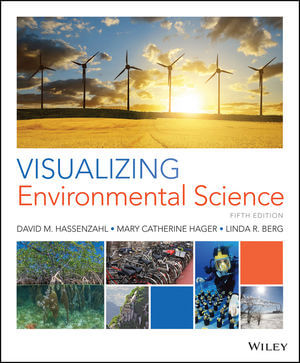

Toggling the photo section between seasons for a single location Selecting a new point on the map to show photography of a new area For the exhibit, we wanted visitors to not just be able to see beautiful images from locations all around the lake, but also be able to see how those places are transformed from season to season. There’s a reason photographers flock to Lake Tahoe. In “Images,” for example, there are two sections: “photos” and “live,” with wintertime photos of Hurricane Bay selected in the screen capture below. Most of the modules contain subcategories that let visitors see different aspects of the topic, and choosing one of those updates the data shown on the map.
#ENVIRONMENTAL VISUALIZATION UPDATE#
Time controls are located at the bottom of the left side and they update depending on the selection. Each module is also described on the left along with either a large image or data visualization. The final exhibit has an interactive map of the Tahoe region on the right and a variety of modules to see and select on the left. EXHIBIT One of two screens mounted in the Tahoe Science Center We ended up sacrificing variety of form for a more streamlined approach, though with unlimited time (and in a world where our data sources were more stable and consistently populated) we would have loved to fully illustrate each data type with some of the unique character we discovered in the prototyping process. Each module would have a map view, a detail display, and the ability to see how the data changed over time.Įventually, certain divergent explorations gave us the understanding we needed to focus down to a consistent representation of all the data across modules. With the goal of creating an exhibit that would be easily updatable and navigable, we devised a modular system for displaying this content.

Step one was, therefore, to understand, catalog and organize all the data that would best tell the story of the lake and then narrow down sources for those data streams. From NASA to NOAA, TERC-specific buoys to citizen science apps, TERC first came to us with literally dozens upon dozens of potential data sources for this experience. There’s no shortage of scientific data about Lake Tahoe. In addition to highlighting the important scientific findings of SOTL, these exhibits provide additional media and information that helps contextualize the lake for visitors of all interests.

Starting in 2016 and continuing through periodic phases in 2018, TERC worked with Stamen to visualize these findings into a Tahoe visitor-focused interactive touchscreen display - currently on display at the Tahoe Science Center as well as at a handful of other visitor-oriented locations around the lake. To support understanding the science of the lake, the UC Davis Tahoe Environmental Research Center (TERC) releases an annual State of the Lake Report (SOTL) that details the trends, forecasts, and current status of the environmental factors contributing to the Tahoe Basin’s unique ecosystem. And still others think of the 2 million year old lake as the ecological treasure lying at the heart of the Tahoe Basin.

Others think of those famously blue waters from a different recreational perspective: a place to sail, swim, and even surf. To some, Lake Tahoe represents the quintessential winter wonderland - a playground of powdery snow and stunning vistas.


 0 kommentar(er)
0 kommentar(er)
